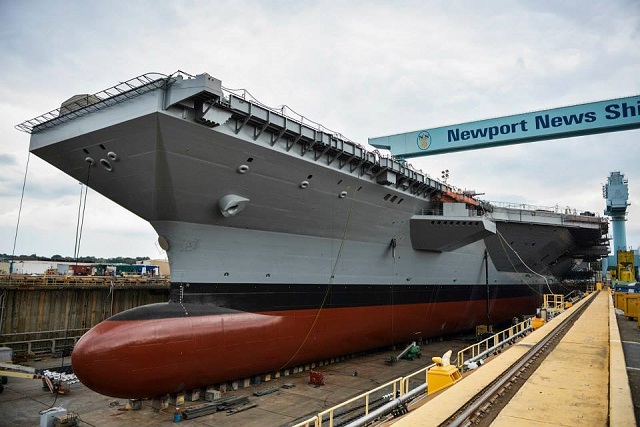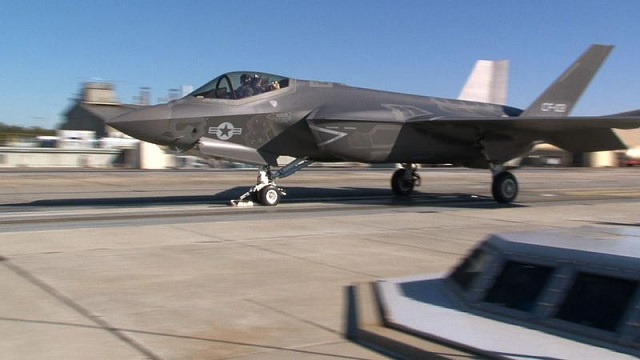| |
|||
| a | |||
Naval
Industry News - USA |
|||
U.S.
Navy, General Atomics and HII started EMALS tests onboard USS Gerald
R. Ford (CVN 78) |
|||
The Huntington Ingalls Industries (HII) shipyard in Newport News, Virginia
is all abuzz as below deck-testing of the Navy’s newest aircraft
launch system begins aboard nuclear-powered
aircraft carrier USS Gerald R. Ford (CVN 78). Following months
of large-scale hardware deliveries containing critical components of
the Electromagnetic Aircraft Launch System (EMALS) and shipboard installation
by HII, teams from the government and industry partner General Atomics
completed installation of the software — the brains of the new
system. Below deck-testing began Aug. 11 with the Launch Control Subsystem,
the first of many subsystem assessments on the path toward EMALS shipboard
certification. |
|||
 The aircraft carrier Gerald R. Ford (CVN 78) in the dry dock at Newport News Shipbuilding Picture: HII |
|||
“The
complex array of interconnected subsystems internal to the ship is what
essentially powers and controls the launches, so it’s a pivotal
point in the process of supplanting the steam-powered catapults currently
in use with the powerful and efficient electromagnetic technology,”
said George Sulich, EMALS integrated product team lead who has been
with the program since its inception in 1999. With six intricate subsystems providing the capability to launch all current and future planned carrier wing platforms from catapults on the carrier’s flight deck, the combined shipbuilder, government and industry EMALS team is preparing for dead-load launches from the ship in late 2015. Manned aircraft launches will follow CVN 78’s scheduled delivery in spring 2016. The remaining EMALS top-deck components are arriving weekly, bringing EMALS closer to completion of delivery. |
|||
 An F-35C Lightning II test aircraft piloted by Lt. Christopher Tabert launches for the first time from the new electromagnetic aircraft launch system. The new launch system will be installed on the aircraft carrier USS Gerald R. Ford (CVN 78). (U.S. Navy photo by David Sckrabulis/Released) |
|||
“This
leading-edge system will be an integral part of our carriers for many
years to come, so we are literally watching Navy history as it happens,”
said Capt. Jim Donnelly, Aircraft Launch and Recovery Equipment (ALRE)
program manager, whose office manages the EMALS program. “All but six percent of EMALS equipment is delivered to the ship and it’s quite a privilege to watch this come to fruition,” he said, adding it is an exciting and rewarding time for the many dedicated team members who have been there throughout its evolution and for the fleet, which will benefit from the system’s advances. EMALS is a complete carrier-based launch system, designed to expand the operational capability of the Navy’s future carriers to include all current and future planned carrier aircraft – from lightweight unmanned to heavy strike fighters. It delivers necessary higher-launch energy capacity, substantial improvements in system maintenance, increased reliability and efficiency, and more accurate end-speed control with a smooth acceleration at both high and low speeds. Click here to learn more on Gerald R. Ford Class (CVN-78) Aircraft Carrier |
U.S. Navy, General Atomics and HII started EMALS tests onboard USS Gerald R. Ford (CVN 78)
- Posted On










